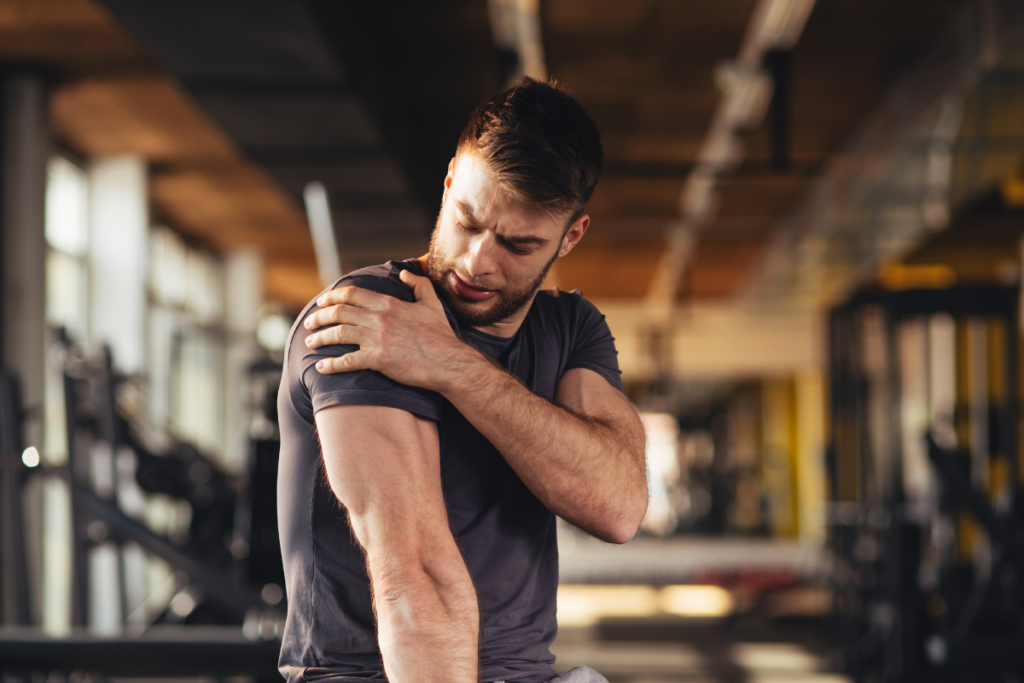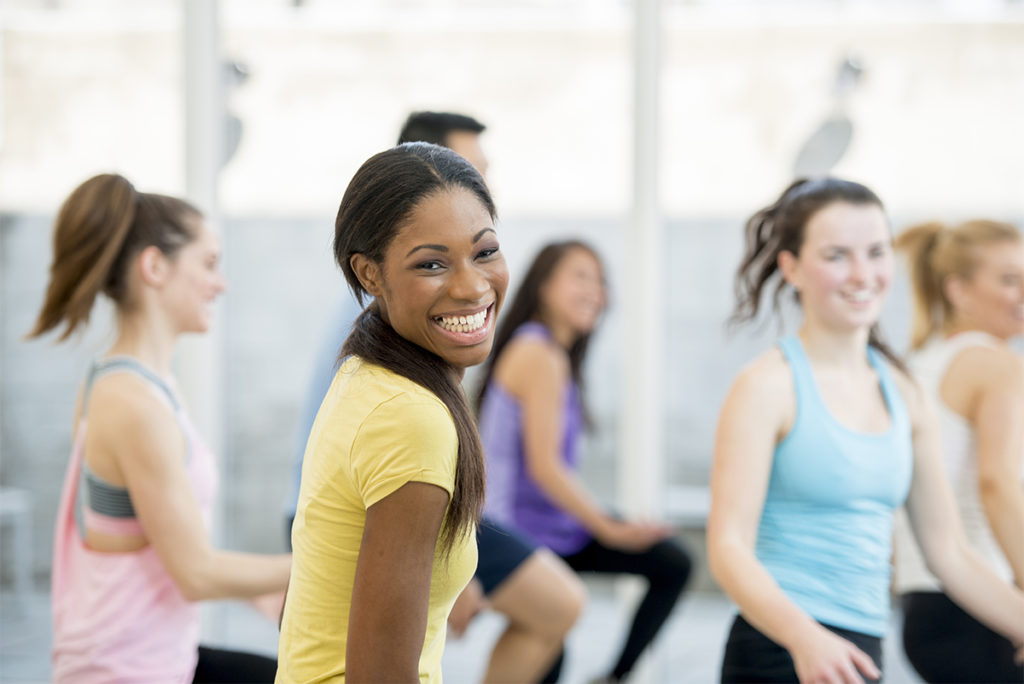2010 IDEA Fitness Programs & Equipment Trends
Fifteen years of survey data show that the fitness industry has matured to meet the Herculean task of taking on the obesity, inactivity and chronic disease of a nation at risk.
The first time we surveyed members for the annual IDEA Fitness Programs & Equipment Trends report, in 1995, personal training was just beginning to emerge as an affordable exercise option for most consumers and as a viable career choice for fitness professionals. Pilates had been around for decades; however, relatively few exercise professionals knew much about it. Zumba® What-a? Never heard of it. The BOSU® Balance Trainer and Ballast Ball®, the TRX® Suspension Trainer™ and the full array of small, portable equipment that both group exercise teachers and personal trainers rely on so heavily today were nonexistent.
Oh, how our industry—and the world itself—has changed!
The obesity issue was just budding. Naturally, the chronic disease systems that go hand in glove with it also seemed containable, as did national healthcare costs. It’s a paradox of sorts. The industry is so much wiser, so much better equipped and so much more prepared to help those in need; yet, the world is fatter and sicker than ever. If there was ever a time for the industry to rise to a challenge, we are certainly living in it now.
The 15th anniversary edition of our annual IDEA Fitness Programs & Equipment Trends survey was distributed to IDEA club owners, fitness directors and other fitness professionals in January and February. The results were analyzed with an eye on how our members’ programs and equipment choices support the recently released Surgeon General’s Vision for a Healthy and Fit Nation, a plan to help Americans attain optimal health at all stages of their lives through regular physical activity and better nutrition.
Every year, this report details the diversity of our clientele, the steady evolution of our training knowledge translated to programming and the ever-changing landscape of equipment offerings we use to serve everyone from children and teens to elite athletes, pregnant women, frail elderly and weekend warrior Baby Boomers. Our facilities provide clients with a wide range of equipment—from the small and portable to the stationary and adjustable—designed to address a wide range of fitness levels. Our group fitness programs have been modified so that participants with lower levels of fitness and coordination and broader cultural backgrounds can enjoy and benefit from group classes. It is our goal not just to Inspire the World to Fitness® but to support the Surgeon General’s vision for fitness and health. This means we need to continually evaluate our services industry-wide in the greater context of meeting the needs of the public and improving the state of its health.
The 157 IDEA business and program director members who responded to the survey can help us expand our perspective on how best to assist our clients and our nation with improving their well-being and health. The diversity of this group is reflected in the percentage of respondents representing multipurpose health clubs (17%), personal training gyms (13%), yoga or Pilates studios (12%), fitness-only health clubs (10%) and YMCA/YWCA/JCCs (6%). These respondents report that an average of 78% of their members/clients stay with their business for 1 year or longer. How are IDEA members managing this important work of inspiration and retention?
Personal Training Trends Are Consistent With Equipment Trends
As you review the multiple-year trend comparison, you will note that there has been consistent growth in facilities offering all types of personal training. Among the various personal training formats, the greatest increases have been in shared sessions for 2 clients or small groups of 3–5 clients. Shared sessions were offered by 66% of respondents in 2002 and 90% in 2010, whereas small-group sessions were offered by 43% in 2002 and 76% in 2010. A similar trend can be observed in the equipment offered by facilities. As small-group personal training sessions become more popular, more facilities are offering smaller pieces of equipment that can be utilized in this context. The most popular types of equipment are those that are suitable for small spaces, are transportable and can be individualized for clients. Stability balls (95%), resistance tubing and bands (95%), barbells and/or dumbbells (90%), balance equipment (87%), medicine balls (87%) and foam rollers and small balls (83%) are offered by the majority of facilities surveyed.
Brett Klika, director of athletics at Fitness Quest 10 in San Diego, explains these two similar trends: “The concept of ‘personal training’ has become more mainstreamed in the last decade due to a shift in exercise paradigm from bodybuilding and powerlifting to more general ‘functional’ fitness for the masses,” he observes. “Supervised exercise and physical activity has become the answer to our automated, inactive society. Because of this, new clients are becoming involved with personal training who would not have done so 15 years ago. Youth, Baby Boomers and geriatric clients often have different motivations than traditional ‘personal training’ clients. They want to get healthy and look good, but it needs to be fun, engaging and different!
“They don’t want to sit inside on machines,” says Klika. “They want to move; they want to laugh; they want to exercise with friends; and they want to get outside and ‘play.’ They want to return to a time in their life, physiologically and emotionally, where they felt physically capable. The industry must adapt to accommodate the social interaction, dynamic programming and overall training experience these populations seek. Having portable, adaptable equipment allows trainers to provide this experience, regardless of the location or number of clients in a group.”
Less Choreography Equals More Offerings in the Group Exercise Room
Group exercise classes clearly remain popular with the facilities surveyed, as 78% provide this service to their clients. The average number of group exercise classes on the schedule per week is 38, with approximately 16 people participating per class. Class duration varies, with 60 minutes (83%) and 45 minutes (42%) being the most popular lengths.
Group offerings that have seen the largest increases since 2002 include indoor cycling (44% to 59%), circuit (69% to 77%) and core-conditioning classes (72% to 80%); and over the past 7 years the greatest increases have occurred in indoor boot camp (28% to 67%) and small-group classes on machines (24% to 35%).
Fred Hoffman, MEd, director of international services for The Club Synergy Group, in Paris, notes that multiple factors have likely contributed to the prevalence of these offerings. However, he believes that their growth can be largely attributed to two factors: the classes enable participants to be successful by allowing them to work at their own level and intensity, and they are unintimidating from a skill perspective. “Most of [these offerings] are class formats and activities with simple or no ‘choreography,’ where participants don’t really have to be ‘in sync’ with everyone else and where they are encouraged to compete only with themselves, not with the other class members,” says Hoffman. “For example, in the case of indoor cycling, although there are specific techniques associated with certain programs, basically, students only have to be able to ride a stationary bicycle, and as a rule, they are concerned only with their own ride, not with [what others are doing].”
Classes that are typically more choreographed have declined (sometimes dramatically) over the past 9 years. They include boxing-based/kickboxing sessions (71% to 36%), martial arts–based aerobics (43% to 19%), aerobics (85% to 66%) and step (82% to 65%). Hoffman suggests that “during recent years, we’ve seen a decline in step training, low-impact and kickboxing classes as a result of instructors teaching increasingly complicated and technical choreography to a more ‘elite’ student. Unfortunately, this has discouraged both newcomers and less skilled club members from joining in and participating. And more unfortunately, most of the people who could really benefit just never tried these classes, as they appeared too far out of [those members’] comfort zone.”
Hoffman notes that another factor contributing to the decline in such programming is the inconsistency in teaching skills among group exercise instructors teaching freestyle classes. This, he says, has “led to an inability to retain participants, resulting in members abandoning those classes to participate in more ‘trendy,’ media-influenced activities such as Pilates, yoga and boot camp.”
There are two exceptions to the decline in more choreographed classes: dance (30% to 56%) and, over the past 4 years, branded choreography (22% to 45%). “The success of many of the branded programs can be attributed to the use of more simple movements and choreography, as well as to a large amount of repetition during a fixed period of time,” Hoffman concludes.
Pilates Continues to Grow, While Other Mind-Body Formats Decline
This year, the survey asked separate questions regarding the number of offerings and the number of participants in Pilates and yoga sessions. The average number of Pilates classes on the schedule per week is 10, with approximately 11 people participating per class. Yoga is offered about 8 times per week and draws about 16 participants per class. Sixty minutes is the most common length for both Pilates and yoga classes (81% and 87%, respectively).
Mind-body programming has made mixed progress. Meditation, tai chi and yoga have declined in prevalence, and Gyrotonic® or Gyrokinesis® exercise and mind-body fusion offerings have increased just slightly. The big areas of growth are Pilates, and Pilates and yoga fusion. Pilates is now offered by 90% of facilities (up from 63% in 2002), and Pilates and yoga fusion has seen a robust increase over the past 7 years (31% to 59%).
“During these particularly challenging economic times, Pilates studios may be continuing to thrive, but it’s an important time for the industry to accommodate changing needs by becoming more creative,” says Lindsay G. Merrithew, president and chief executive officer (CEO) of STOTT PILATES®. “With new innovations in the areas of programming, equipment and studio management, the business as we know it is reaching new heights. With over 10 million people participating in Pilates in North America alone and international business on the rise, this is a very exciting time for instructors, equipment manufacturers and studio owners. Pilates has found its place within general fitness facilities that offer much more than mind-body fitness. Large gyms, studios and community centers have been offering Pilates matwork classes for a very long time, but many found that reformer and chair classes were more successful as a fee-based personal training program.”
How Are We Serving Our Older Clients?
Of the facilities that responded to the survey, 86% serve older adults; however, only 43% offer classes geared specifically to this group. Does this mean we are ignoring the needs of our older population? While under half of the facilities offer classes that are tailored to the senior population, about one-third of IDEA member facilities offer walking programs (33%), water fitness classes (32%) and tai chi (31%), which tend to be popular with the older demographic. In addition, facilities offer equipment that is well suited to meet the health and fitness needs of the 55+ age group; examples include balance equipment (87%), treadmills (76%), and recumbent and upright cycles for cardiorespiratory training (67% and 63%, respectively), as well as resistance tubing or bands (95%) and barbells and/or dumbbells (90%) for strength and bone development.
Bill Sonnemaker, MS, CEO of Catalyst Fitness in Kennesaw, Georgia, says that while his company services many older adults, it accomplishes this through personal training. “We do this for two reasons,” says Sonnemaker. “The first is that we can be laser-focused on their goals and needs in a one-on-one environment as compared to a class format; thus, we are as efficient as possible. The second is cost. We and many others have found that this population is still more likely to have discretionary income as compared with their younger counterparts. It can also be argued that they are in more desperate and immediate need of our care and services.”
So even though not all facilities that have an older membership offer senior-specific classes, the needs of these individuals may still be met through various other programs and equipment offerings.
New Equipment Added to the Survey
New equipment choices—heart rate monitors, pedometers and kettlebells—were added to this year’s survey. Forty-three percent of respondents offer kettlebell training, 37% offer heart rate monitor training and 26% offer pedometer training. While fewer than half the facilities surveyed offer these pieces of equipment, and the anticipated growth of pedometers and heart rate monitors is low (37% and 32%, respectively), kettlebells, by contrast, are predicted to increase by 74% of those who currently offer them.
Jessica Huthmaker, owner of Kettlebell Konnection Training Studio in Colorado Springs, Colorado, thinks she understands the reasoning behind this growth prediction: “I believe the majority of people are coming back to the ‘basics’ when it comes to exercise. People want to lose weight, but they are also realizing the importance of flexibility, mobility and heart health,” she said. “In our time-crunched society, kettlebell [training] is the perfect solution! Kettlebells are so versatile, and [they enhance] a workout because strength training and high-intensity interval training can be done all at once, yielding tremendous fat-burning properties as well as great heart-health benefits.”
Top Three Program Trends
This year we asked IDEA respondents to write in what they saw as the top three programming trends for 2010. Small-group training was the number-one trend for 2010, followed by boot camp training and Zumba. Over the past 9 years, small-group personal training (3–5 people) has increased from 43% to 76%; indoor boot camps (28% to 67%) and outdoor boot camps (14% to 28%) have made gains over the last 7 years. Zumba, while not specifically surveyed, is a branded choreography program that has increased from 22% to 45% in just 4 years. As we look at these top trends, it is interesting to note that they all involve groups of individuals coming together to achieve their fitness goals.
IDEA presenter Carol Murphy, national programming coordinator for Resist-A-Ball®, says that programs like Zumba are hot because they “make the journey fun but also help people feel successful. These programs are packed full of great moves, great music, but simple choreography (if any). In addition, members are drawn to small-group training or boot camps to get a more personal level of instruction, along with connecting to other members with like goals and needs.”
Top Three Equipment Trends
We also asked respondents to write in what they anticipated would be the top three equipment trends in 2010. Elliptical trainers, TRX Suspension Training® equipment and treadmills topped the list. Although a decline has been observed in other large pieces of cardiorespiratory equipment (stationary bikes and stair climbers), elliptical trainers and treadmills continue to be popular.
Ayla Donlin, general manager of Frog’s Fitness in Long Beach, California, believes that treadmills and ellipticals continue to thrive in our facilities because they are easy to operate and are very intuitive pieces of equipment (mimicking walking and running, which most people use as their main methods of cardio). “I also find that people like the fact that they can control their tempo, resistance/incline and speed as well as see how many calories they are burning–which is something they cannot do easily when walking or running outside,” says Donlin. “There has also been a push in the industry to expand the way that treadmills and ellipticals are used. Some models provide cardio theaters with television and/or virtual scenery, as though one was running or hiking outdoors–which expands the gym experience for the member.”
TRX Suspension Trainers were ranked as the second biggest trend for 2010. Fraser Quelch, director of training and development for Fitness Anywhere Inc., believes there are three key reasons why the respondents listed TRX as one of the top fitness trends: “1. It works! TRX is as effective for a high-level group as it is for the deconditioned population. 2. It’s fun and challenging for a huge range of people. We are seeing participants of every age and description of fitness level, and they are all able to challenge themselves at an appropriate level. And finally, TRX has invested a lot of time and effort into developing a deep programming expertise and far-reaching professional education capabilities.”
Today, Tomorrow and Beyond
The fitness industry continues to evolve and search for ways to appeal to a wide range of clientele. We provide a variety of options that enable members to set and achieve their fitness and wellness goals. Program directors continue to strive for ways to be innovative while still offering effective, quality programming.
It is clear that personal training continues to be in high demand. Whether one-on-one, with a partner or in a small group, it consistently offers an opportunity for clients to reach their individual goals. Equipment trends are aligned with this sustained growth in personal training. Types of equipment that are easily transportable and can be individualized are very compatible with personal training sessions.
Each year we hear that facilities offer a wider range of group exercise formats to meet the interests of members. Currently, classes with uncomplicated or modest choreography are popular, as they allow members to be successful in their fitness quest.
Many people within our communities continue to rely on us, not only to offer them suitable activities to meet their wellness goals, but also to provide an environment that is supportive and informative, and up-to-date and sound in its practices. We have a professional responsibility to address the needs of our clients so that they can succeed themselves and also encourage those around them to adopt healthy routines and habits. We believe that the key is to provide a variety of different programming, supported by appropriate equipment. In doing so, we will positively impact the health of this nation.
More Survey Trends and Results
The complete results of the business member survey are available in the July@ndash;August 2010 issue of IDEA Fitness Manager. There you will find the complete list of programs and equipment being offered; growth trends; and multiyear comparisons. IDEA business and program director members receive this issue as a membership benefit. If you wish to receive a copy, contact IDEA member services at (800) 999-4332, ext. 7, or (858) 535-8979, ext. 7.
Look for more survey results in upcoming 2010 issues of IDEA Fitness Journal, IDEA Fitness Manager and IDEA Trainer Success.
| Personal training, combined | 97% |
| Personal training, adult, one-on-one | 96 |
| Pilates | 90 |
| Personal training, 2 clients share | 90 |
| Fitness assessment | 90 |
| Strength training, individual, nongroup | 88 |
| Yoga | 82 |
| Core-conditioning classes | 80 |
| Stretching and/or flexibility | 78 |
| Strength training in group, combined | 78 |
| Circuit classes | 77 |
| Personal training, 3–5 clients share | 76 |
| Abdominals | 72 |
| Personal training, youth, aged 18 or younger, one-on-one | 70 |
| Boot camp classes, indoor | 67 |
| Aerobics, combined | 66 |
| Small-group circuit training | 66 |
| Step aerobics | 65 |
| Clinics on special topics | 65 |
| Stability ball–based programs | 63 |
| Community outreach programs | 62 |
| Strength training, group, with background music | 62 |
| Sport-specific training | 61 |
| Pilates or yoga training, one-on-one | 61 |
| Nutrition coaching | 61 |
| Stability balls | 95% |
| Resistance tubing or bands | 95 |
| Barbells and/or dumbbells | 90 |
| Balance equipment (e.g., BOSU® Balance Trainers, disks, wobble boards, balance boards) | 87 |
| Medicine balls | 87 |
| Yoga mats and equipment | 85 |
| Foam rollers and small balls | 83 |
| Weighted bars | 82 |
| Steps and platforms | 81 |
| Treadmills | 76 |
| Elliptical trainers | 72 |
| Pulley equipment | 70 |
| Cycles, recumbent | 67 |
| Selectorized (pin-selected) machines | 66 |
| Cycles, upright | 63 |
| Plate-loaded machines | 60 |
| Body weight leverage equipment (TRX® Suspension Trainer™, GTS® [Gravity Training System], climbing ladders, ropes, push-up and pull-up devices, etc.) | 56 |
| Stair climbers | 51 |
| Pilates equipment | 50 |
| Cycles, for indoor classes | 46 |
| Indoor rowing machines | 45 |
| Kettlebells | 43 |
| Boxing equipment | 42 |
| Heart rate monitors | 37 |
| Water fitness equipment | 37 |
The 10 programs predicted to grow are generally offered by about half of the respondents. The anticipated growth rates of 60%–69% are moderate.
|
|
Yes, I Offer This* and . . . |
I Believe It Will Grow** |
|
Boot camp classes, outdoor |
28% |
69% |
|
Exercise for chronic medical conditions (e.g., diabetes, coronary heart disease) |
38 |
66 |
|
Body weight leverage training (body weight only, TRX® Suspension Trainer™, GTS®, climbing ladders, ropes, push-up and pull-up devices, etc.) |
46 |
64 |
|
Small-group boot camps |
52 |
64 |
|
Body weight leverage classes (body weight only, TRX® Suspension Trainer™, GTS®, climbing ladders, ropes, push-up and pull-up devices, etc.) |
42 |
63 |
|
Boot camp classes, indoor |
67 |
62 |
|
Dance (e.g., urban street, funk, hip-hop) |
56 |
62 |
|
Branded choreography |
45 |
61 |
|
Seniors’ classes |
43 |
61 |
|
Back pain prevention |
41 |
60 |
|
Postrehab following injury |
51 |
60 |
*% of IDEA business and program director members offering the activity.
**% of those who offer the activity.
In this year’s survey, respondents believe even more strongly than last year that equipment usage will continue to grow. More than 50% of respondents believe that six of the following 10 pieces of equipment will continue to grow in the future.
|
|
Yes, I Offer This* and . . . |
I Believe Usage Will Grow** |
|
Computer training programs, interactive |
7% |
75% |
|
Kettlebells |
43 |
74 |
|
Body weight leverage equipment (TRX® Suspension Trainer™, GTS®, climbing ladders, ropes, push-up and pull-up devices, etc.) |
56 |
66 |
|
Computer workout tracking |
18 |
64 |
|
Nutrition analysis software |
22 |
52 |
|
Pilates equipment |
50 |
52 |
|
Foam rollers and small balls |
83 |
48 |
|
Balance equipment (e.g., BOSU® Balance Trainers, disks, wobble boards, balance boards) |
87 |
47 |
|
Cycles for indoor classes |
46 |
45 |
|
Elliptical trainers |
72 |
42 |
*% of IDEA business and program director members offering the equipment.
**% of those who offer the activity.
Jan Schroeder, PhD
Jan Schroeder, PhD, is a professor and past chair of the department of kinesiology at Long Beach State University. She coordinates and teaches in the fitness and integrated training undergraduate program and has written 60+ articles on exercise physiology/fitness. She is also a certified group exercise instructor who teaches weekly in the private sector. Schroeder is the recipient of the 2021 IDEA Fitness Leader of the Year Award.






